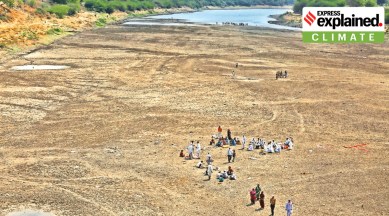What a new study says on the link between ‘flash droughts’ and climate change
The study found that flash droughts occurred more often than slower ones in tropical places like India, Southeast Asia, sub-Saharan Africa and the Amazon basin.

Flash droughts, the kind that arrive quickly and can lay waste to crops in a matter of weeks, are becoming more common and faster to develop around the world, and human-caused climate change is a major reason, a new study has found.
As global warming continues, more abrupt dry spells could have grave consequences for people in humid regions whose livelihoods depend on rain-fed agriculture. The study found that flash droughts occurred more often than slower ones in tropical places like India, Southeast Asia, sub-Saharan Africa and the Amazon basin.
monthly limit of free stories.
with an Express account.
But “even for slow droughts, the onset speed has been increasing,” said Xing Yuan, a hydrologist at Nanjing University of Information Science and Technology in China and lead author of the study, which was published on Thursday in Science. (‘A global transition to flash droughts under climate change’)
How have such events heightened?
The world has probably always experienced rapid-onset droughts, but only in the past decade or two have they become a significant focus of scientific research. New data sources and advances in computer modeling have allowed scientists to home in on the complex physical processes behind them. The concept also gained attention in 2012 after a severe drought charged across the United States, ravaging farm fields and pastures and causing over $30 billion in losses, most of them in agriculture.
In general, this kind of rapid drying occurs when it is warm and rain would normally be falling but very little is, said Andrew Hoell, a climate scientist with the National Oceanic and Atmospheric Administration who was not involved in the new research but has contributed to other studies on the subject.
In such circumstances, the ground might already be wet from earlier rain or snow, Hoell said. So when the precipitation suddenly shuts off, hot, sunny and windy conditions can cause large amounts of water to evaporate quickly.
This is why the humid tropics tend to experience more flash droughts than slow ones. The wet seasons there are usually rainy enough to keep land and vegetation damp. But when the rains fail unexpectedly, the equatorial heat can desiccate the ground to devastating effect.
The researchers looked at data from computer models on soil moisture worldwide between 1951 and 2014. They focused on drought episodes that were 20 days or longer, to exclude dry spells that were too short to cause much harm.
The trends varied from place to place, but, looked at globally, they show a shift toward more frequent and more rapid flash droughts.